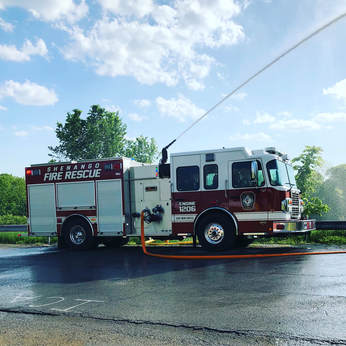Fire Safety
"A smoke alarm is critical for the early detection of a fire in your home and could mean the difference between life and death. Fires can occur in a variety of ways and in any room of your home. But no matter where or how, having a smoke alarm is the first key step towards your family's safety."
source: www.firesafety.gov
source: www.firesafety.gov
Smoke Alarms
* Install smoke alarms following manufacturers' instructions.Smoke alarms cut the risk of dying in a reported fire in half.
* Most homes (96%) have at least one smoke alarm (according to a 2008 telephone survey.)
* Overall, three-quarters of all U.S. homes have at least one working smoke alarm.
* Each year, nearly 3,000 people die in U.S. home fires.
* In 2003-2006, roughly two-thirds of home fire deaths resulted from home fires in homes with no smoke alarms or no working smoke alarms.
- No smoke alarms were present in 40% of the home fire deaths.
- In 23% of the home fire deaths, smoke alarms were present but did not sound.
* In more than half of the reported home fires in which the smoke alarms were present but did not operate even though the fire was large enough, batteries were missing or disconnected. Nuisance alarms were the leading reason for disconnected alarms.
* More than half of the smoke alarms found in reported fires and two-thirds of the alarms found in homes with fire deaths were powered by battery only.
* Most homes still have smoke alarms powered by battery only. In a 2007 American Housing Survey (AHS), 67% of the respondents who reported having smoke alarms said they were powered by battery only.
* In a 2008 telephone survey, only 12% knew that smoke alarms should be replaced every 10 years.
* In fires considered large enough to activate a smoke alarm, hard-wired alarms operated 91% of the time; battery-powered smoke alarms operated 75% of the time.
* Interconnected smoke alarms on all floors increase safety.
- In a U.S. Consumer Product Safety Commission (CPSC) survey of households with any fires, interconnected smoke alarms were more likely to operate and alert occupants to a fire. (This includes fires in which the fire department was not called.)
* Most homes (96%) have at least one smoke alarm (according to a 2008 telephone survey.)
* Overall, three-quarters of all U.S. homes have at least one working smoke alarm.
* Each year, nearly 3,000 people die in U.S. home fires.
* In 2003-2006, roughly two-thirds of home fire deaths resulted from home fires in homes with no smoke alarms or no working smoke alarms.
- No smoke alarms were present in 40% of the home fire deaths.
- In 23% of the home fire deaths, smoke alarms were present but did not sound.
* In more than half of the reported home fires in which the smoke alarms were present but did not operate even though the fire was large enough, batteries were missing or disconnected. Nuisance alarms were the leading reason for disconnected alarms.
* More than half of the smoke alarms found in reported fires and two-thirds of the alarms found in homes with fire deaths were powered by battery only.
* Most homes still have smoke alarms powered by battery only. In a 2007 American Housing Survey (AHS), 67% of the respondents who reported having smoke alarms said they were powered by battery only.
* In a 2008 telephone survey, only 12% knew that smoke alarms should be replaced every 10 years.
* In fires considered large enough to activate a smoke alarm, hard-wired alarms operated 91% of the time; battery-powered smoke alarms operated 75% of the time.
* Interconnected smoke alarms on all floors increase safety.
- In a U.S. Consumer Product Safety Commission (CPSC) survey of households with any fires, interconnected smoke alarms were more likely to operate and alert occupants to a fire. (This includes fires in which the fire department was not called.)
|
Shenango Twp. Volunteer Fire Department will make every effort to accommodate your request. We ask that you allow a large enough period of time before the presentation so we can plan accordingly.
|
FACTS * Cooking is the #1 cause of home fires and injuries.
* Smoking is the leading cause of fire deaths. * Heating is the second leading cause of home fires, fire deaths and fire injuries. * Electrical failures or malfunctions are factors in roughly 50,000 reported fires each year. * Roughly 30, 000 intentionally set home structure fires are reported each year. In 2008...
* U.S. fire departments responded to 386,500 home fires.
* Home fires killed 2,755 people and injured 13,160. * Someone was injured in a reported home fire every 40 minutes. * Roughly eight people died in home fires every day. * A fire department responded to a home fire every 82 seconds. * 83% of all fire deaths and 79% of fire injuries resulted from home fires. "Reproduced from NFPA's Fire Prevention Week Web site, www.firepreventionweek.org. ©2010 NFPA."
|

